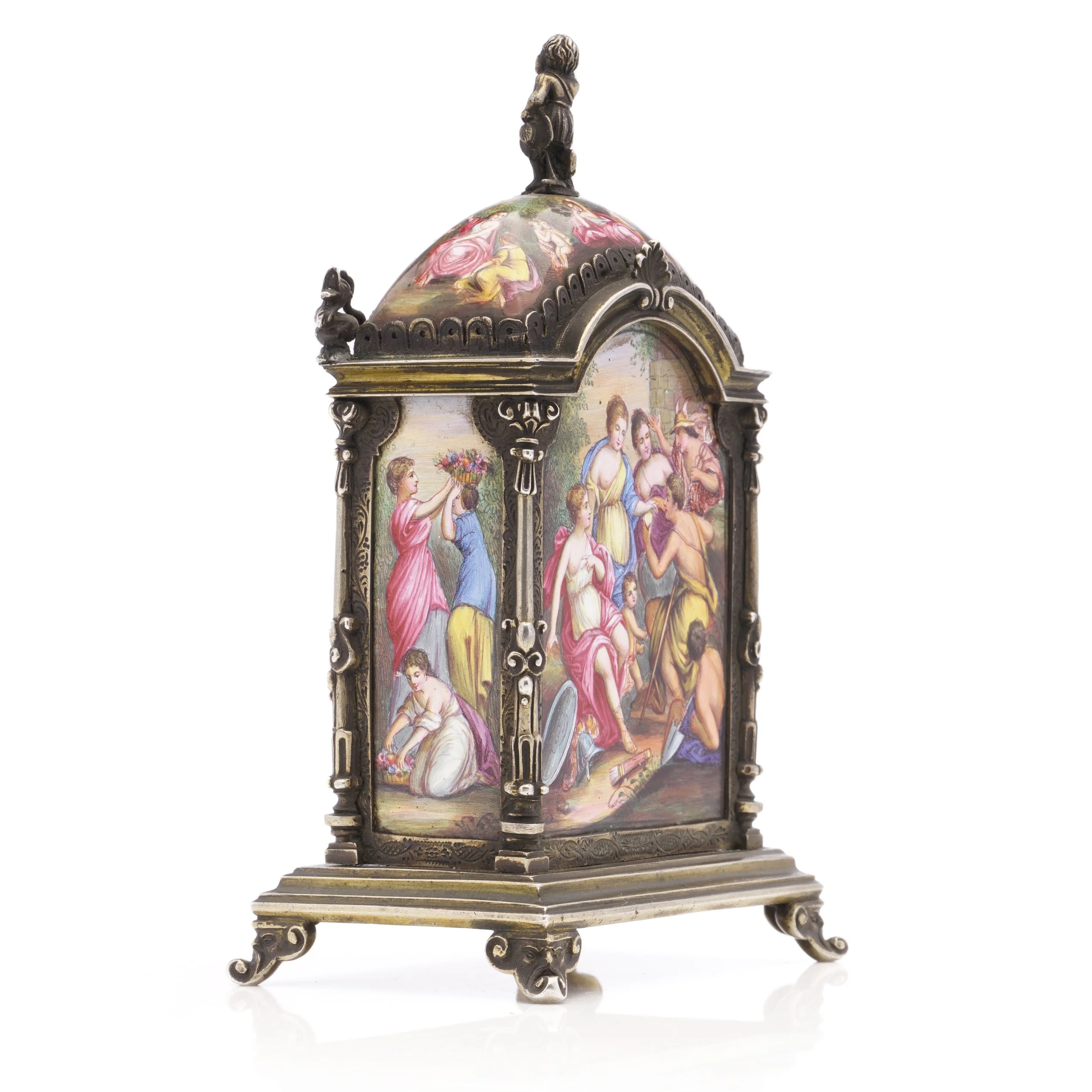-
This is an antique Austrian silver gilt and enamel clock with an arched rectangular form on a stepped base, featuring scroll bracket feet. The corners of the clock are formed as pilasters surmounted by mythical creatures. There is a figure of a boy with a straw hat by his side at the top. The front of the clock has a painted enamel scene of maidens sitting between a putto below the glazed dial, while the top features Mercury and Roma. The back of the clock has a painted scene of Mercury with maidens and discarded weapons of war, while the sides display painted figures. The white enamel dial has a painted center of Venus and Apollo with Roman numerals.
Marked 950 standard silver with the maker’s mark for Hermann Ratzersdorfer.
Size: Height: 13.5 cm
Depth: 5.4 cm
Width: 8.5 cm
Weight: 367 gramsCondition: antique condition with minor signs of usage, good and pleasant condition overall.
-
France was the decorative arts world's centre in the 19th century, and the French gilded bronze mantel clock was a perfect illustration of that period's excellent craftsmanship. These clocks were generally fashioned of skillfully cast brass and ornately detailed with exquisite ornamental elements.
During this period, the French clockmaking business saw substantial transformations as a result of new technology and industrialisation, which enabled mass manufacture of clocks. This resulted in a boom in demand for beautiful clocks among the higher classes as a sign of wealth and elegance.
The neoclassical and rococo styles strongly affected the elaborate aesthetic of these clocks, and many of the designs were inspired by ancient mythology and classical elements. The clocks were made in Paris and included the work of prominent clockmakers such as Henri-Louis Jaquet-Droz, André-Charles Boulle, and Louis-François Roubiliac.
French gilded bronze mantel clocks were a status symbol as well as a functioning timepiece, frequently employed as centrepieces in magnificent interiors and exhibited at international fairs and exhibits. The craftsmanship and elegance of these clocks were admired not just in France, but across the world, and numerous specimens may be found in collections and museums worldwide.
In conclusion, 19th century French gilded bronze mantel clocks are a tribute to the period's outstanding craftsmanship and exquisite design. They are considered the peak of French clockmaking and are still prized by collectors and aficionados today.













